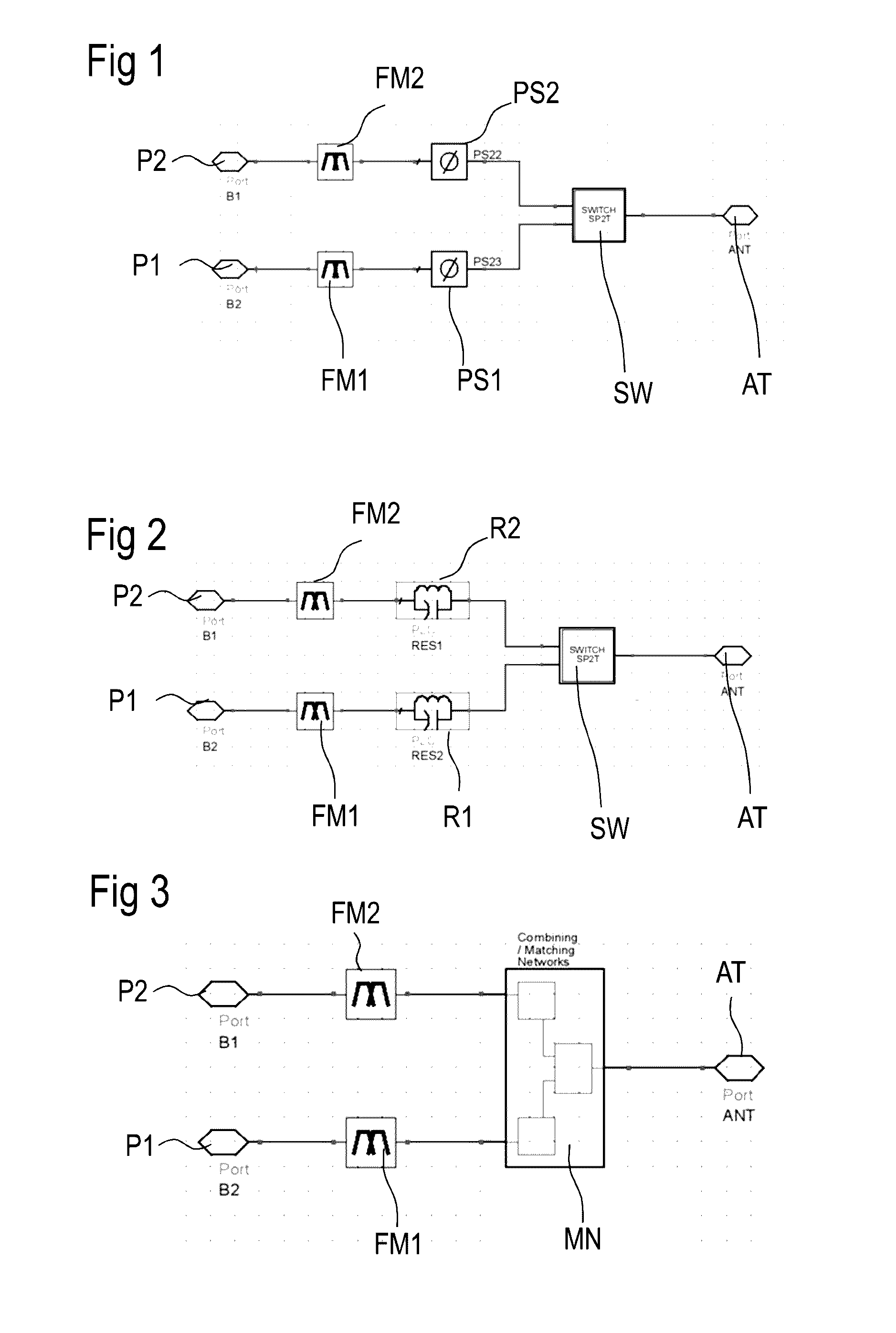Front-End Module for Carrier Aggregation Mode
a carrier aggregation and module technology, applied in the direction of transmission, electrical equipment, etc., can solve the problems of power loss, higher insertion loss, power loss, etc., and achieve the effect of enhancing gate width, enhancing gate width, and increasing linearity of switch
- Summary
- Abstract
- Description
- Claims
- Application Information
AI Technical Summary
Benefits of technology
Problems solved by technology
Method used
Image
Examples
first embodiment
[0068]FIG. 5 shows a first embodiment according to the invention. In principle, the new front-end module is a cascade of a first switch SW1 and a second switch SW2. First and second switch are connected by at least three different signal paths. One of the connecting paths is a bypass BP without phase shifter and without resonator, directly connecting first and second switches. At least one notch path N1, NP2 connects another output OP1 of the first switch SW1 with the input of the second switch SW2. The notch path NP comprises a notch and the notch comprises a resonator R1. The further notch path NP2 and others are connecting further outputs of the first switch SW1 with the input of the second switch SW2 with further notches arranged therein. The notches are tuned to provide a high impedance state for frequencies within the counter band of a carrier aggregation mode.
[0069]In the paths, matching may be needed to stay at a certain impedance level or to match components before connecti...
third embodiment
[0108]A third embodiment according to c) of FIG. 9 shows a shunt series resonance circuit of a capacitor C and an inductance LP. Within the signal line, a transmission line TL is inserted. The shunt is coupled to the series line via a switch to toggle between single mode operation and CA mode operation.
[0109]Further circuits known from the art having a different circuit topology but realizing a series open circuit for the frequencies to be blocked are possible, too. By default, the resonators are tuned at the OOB frequencies, thus providing an open.
[0110]Tuning of the resonators, phase shifters, etc. may be done by further using the parasitics of components present in the module or by parasitics that are inherent to conductor lines. So, an inductor already has a certain parasitic shunt capacitance and a capacitor already has small parasitic series inductance. These parasitics have to be taken into account when designing a resonator, phase shifter, or another circuit using LC element...
PUM
 Login to View More
Login to View More Abstract
Description
Claims
Application Information
 Login to View More
Login to View More - R&D
- Intellectual Property
- Life Sciences
- Materials
- Tech Scout
- Unparalleled Data Quality
- Higher Quality Content
- 60% Fewer Hallucinations
Browse by: Latest US Patents, China's latest patents, Technical Efficacy Thesaurus, Application Domain, Technology Topic, Popular Technical Reports.
© 2025 PatSnap. All rights reserved.Legal|Privacy policy|Modern Slavery Act Transparency Statement|Sitemap|About US| Contact US: help@patsnap.com



